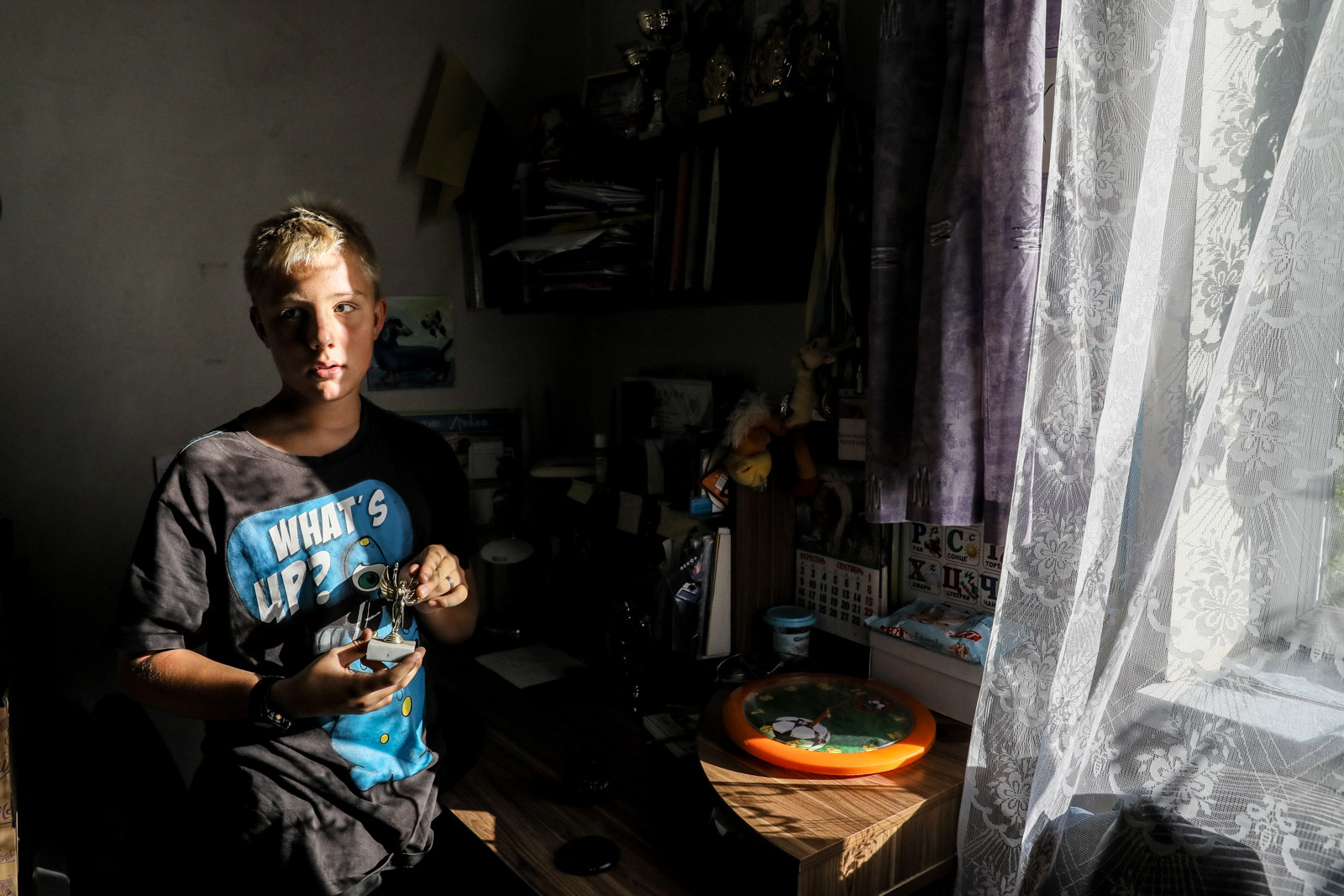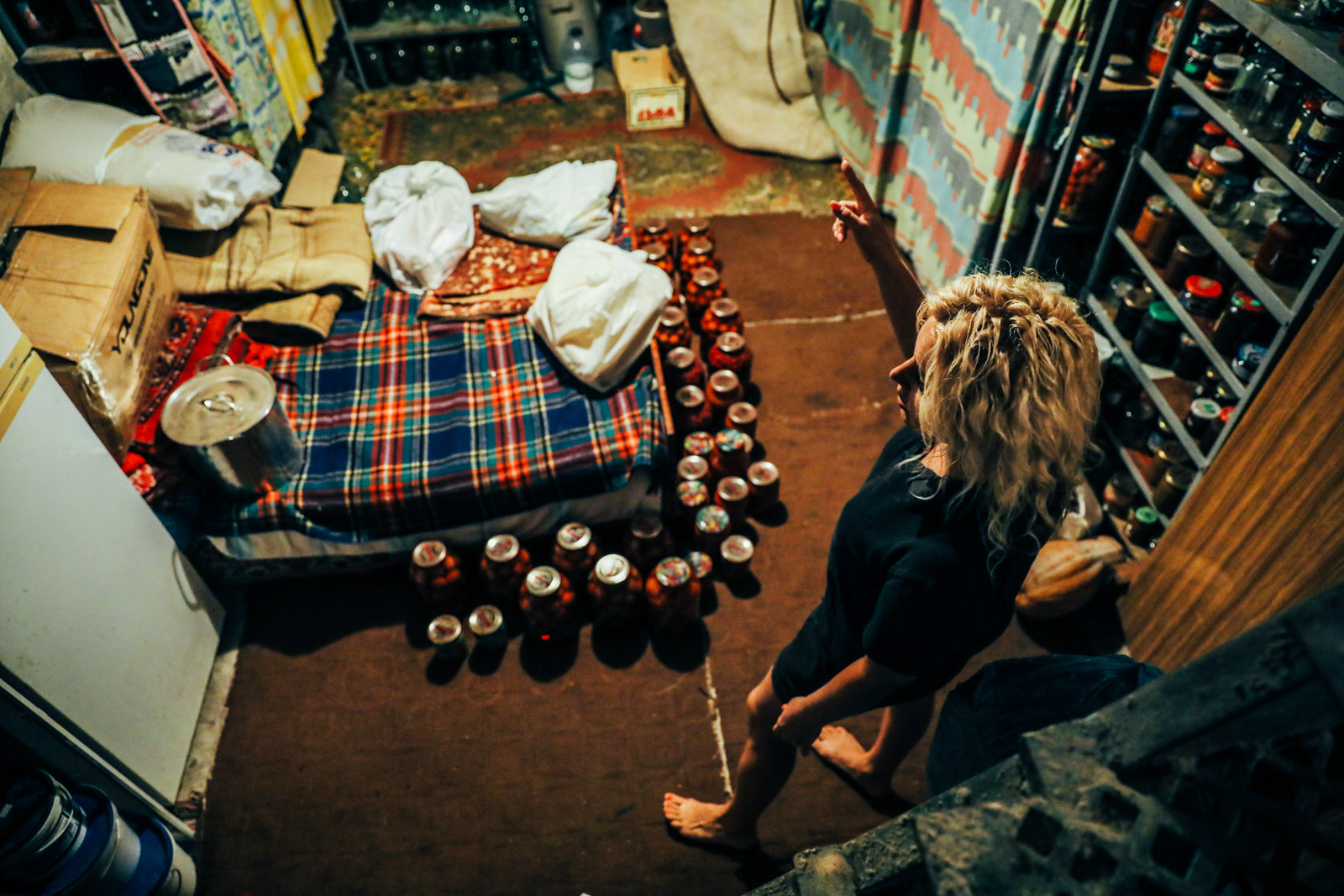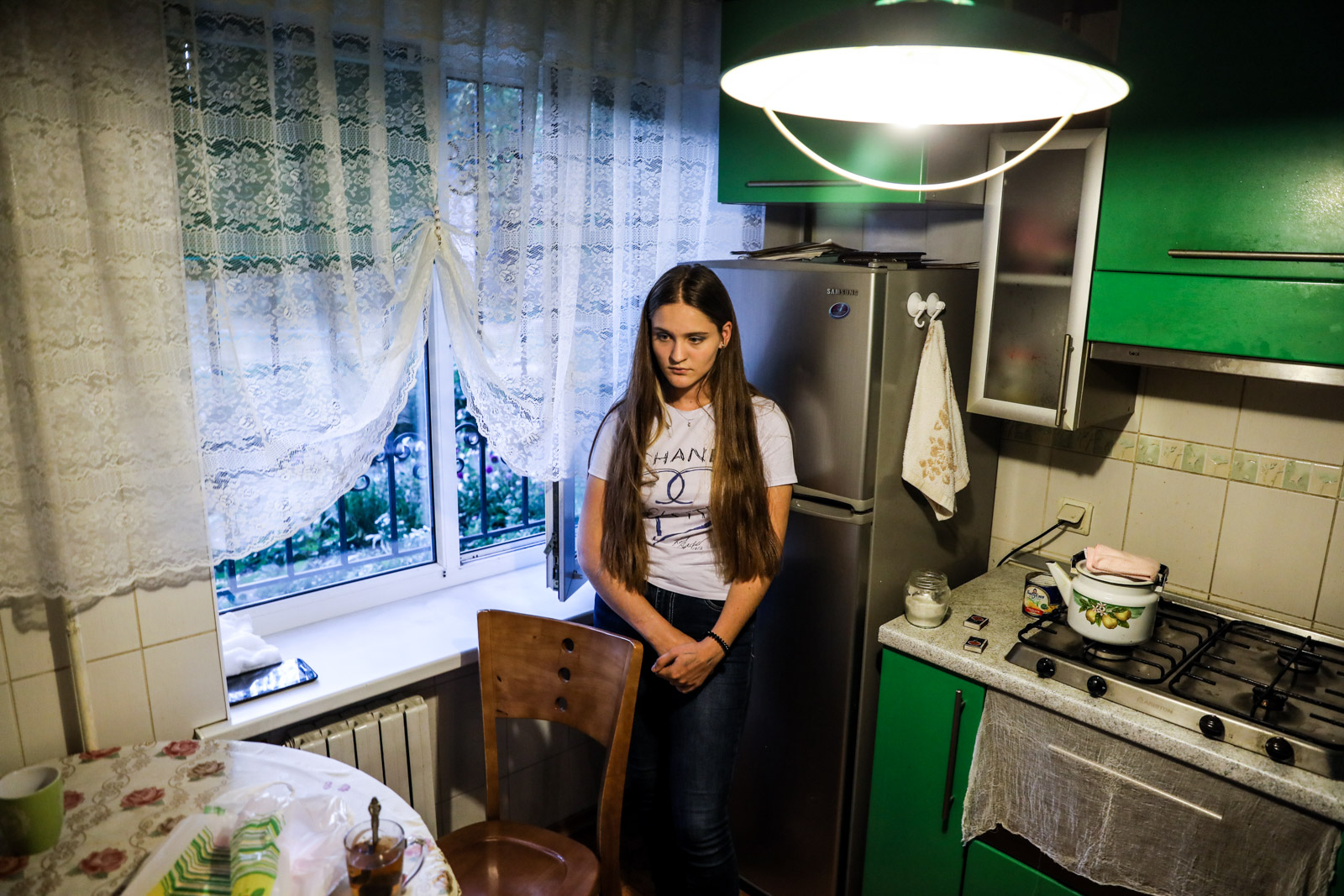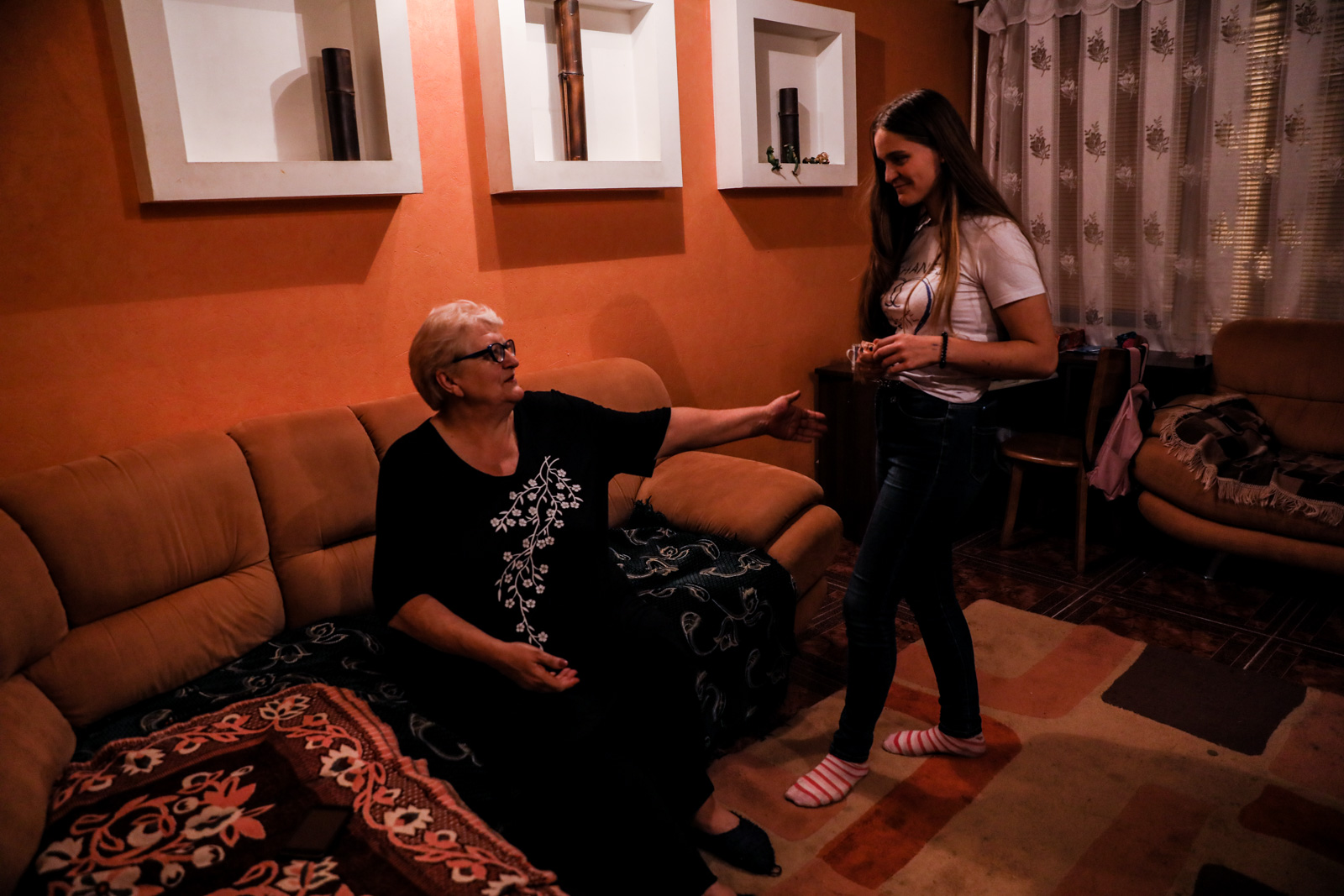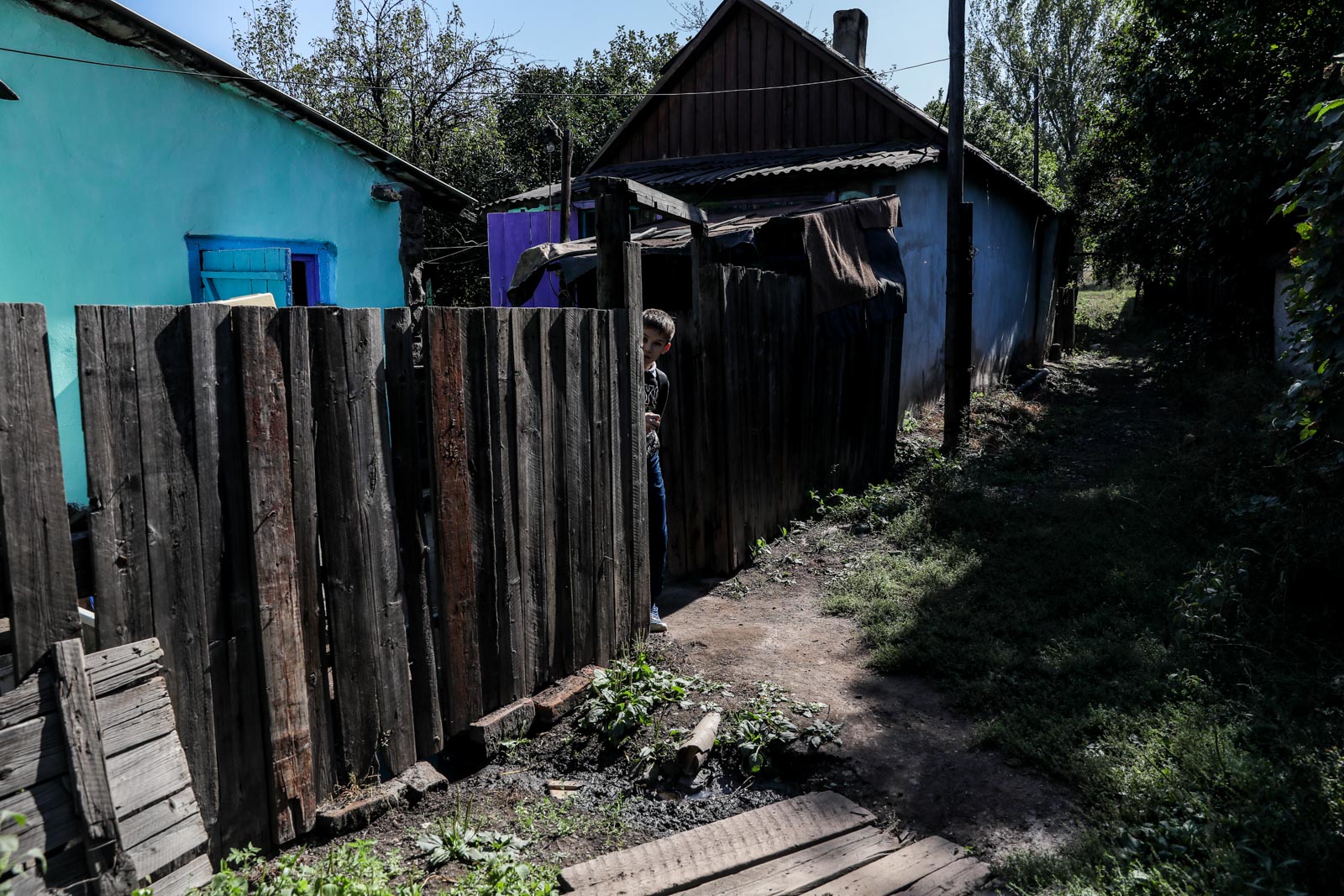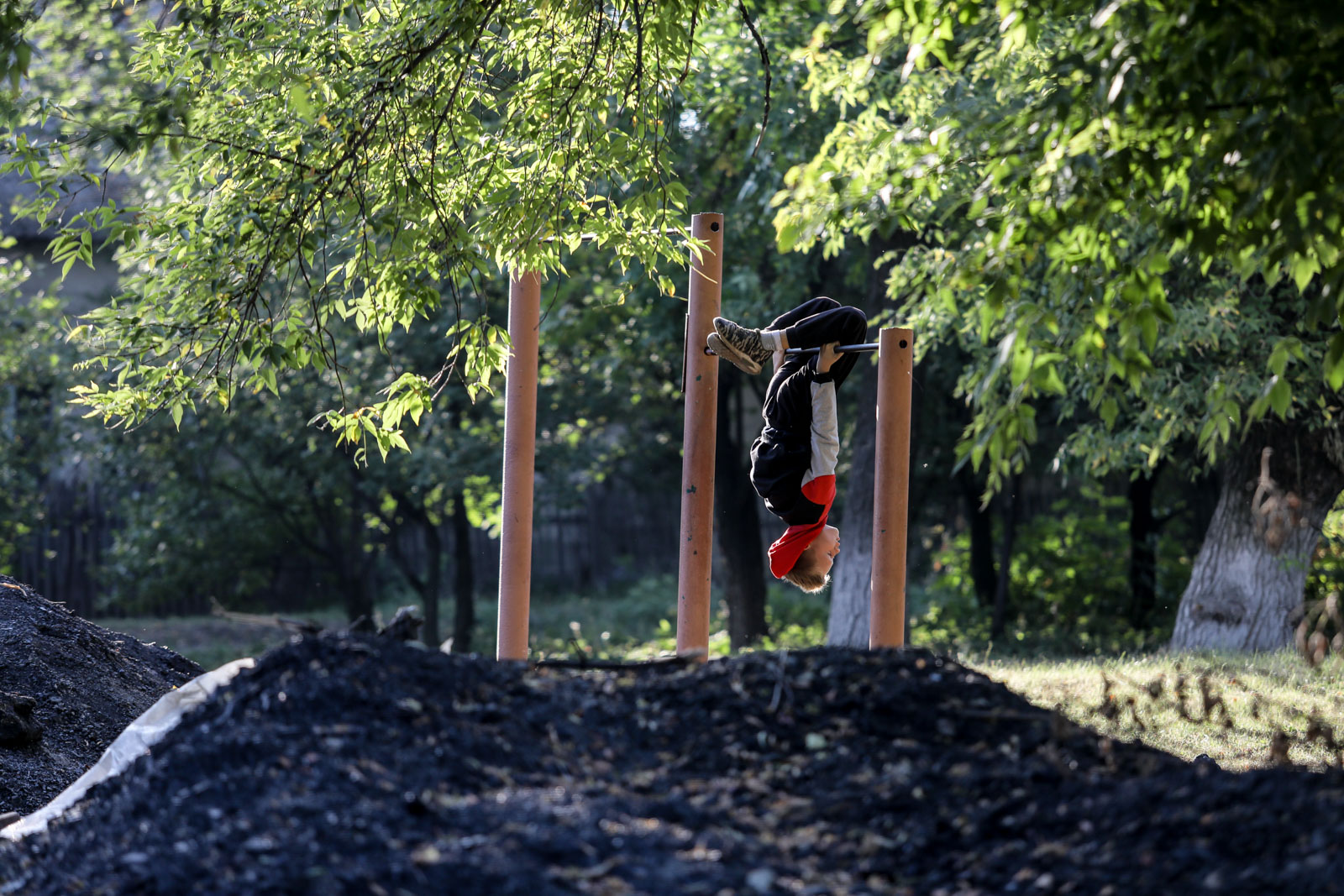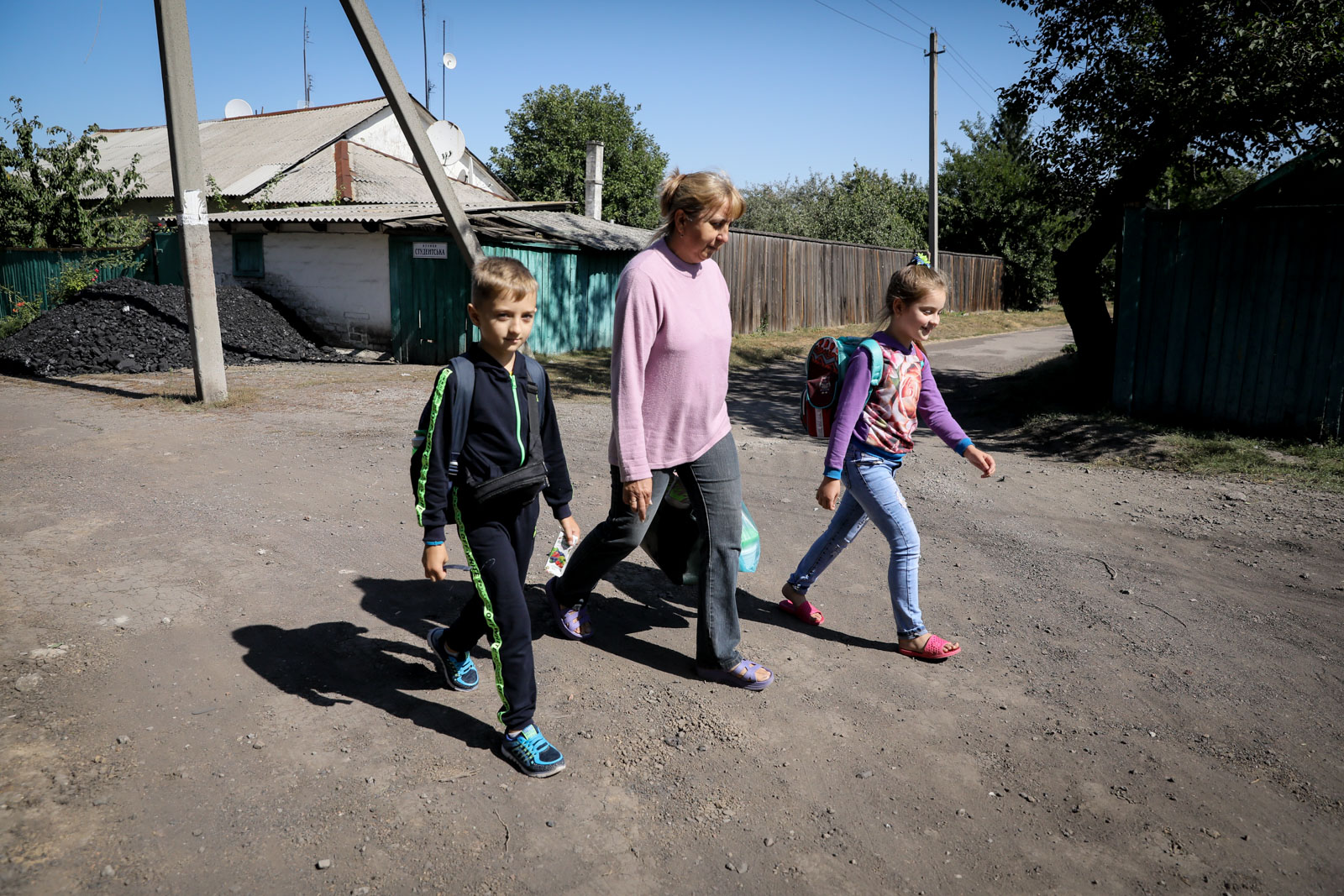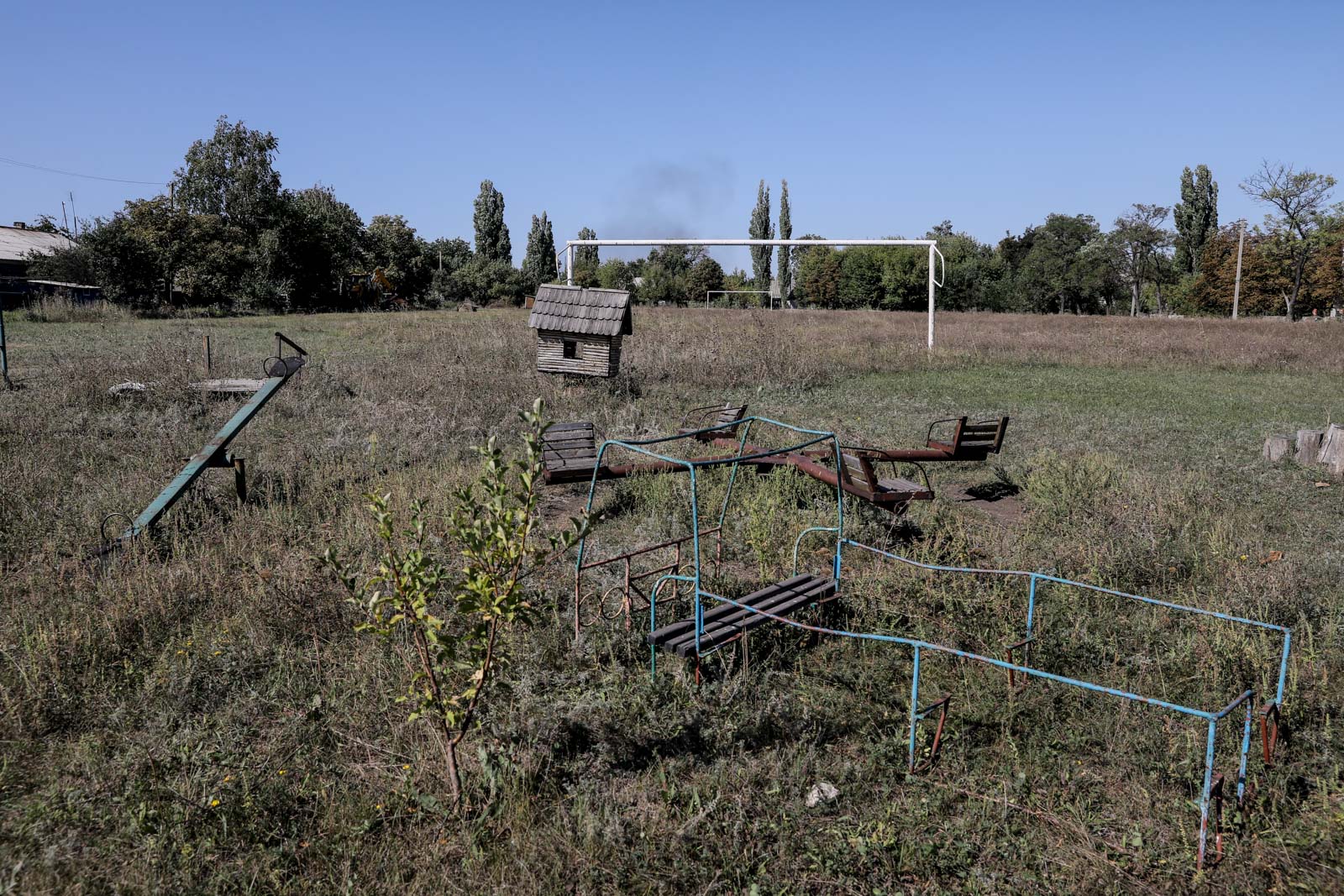AVDIYIVKA-ZOLOTE, Ukraine — Kostia Kosyk loves and cares for his dog Simba, a 3-month-old Miniature Pinscher his parents bought him as a birthday present this year.
When Kosyk runs to the basement to hide from bombing, he grabs Simba and covers the puppy’s ears. The boy is afraid Simba may die from fear when hearing loud sounds of shells.
Kosyk, 12, knows well what fear is.
Once a tank pointed its barrel at a car where he was sitting. Another time, he saw a man shot by a sniper at a bus stop.
The boy lives in Avdiyivka, a front-line city of 33,000 residents in Donetsk Oblast, which is 665 kilometers from Kyiv and just a few kilometers from the Russian-occupied area.
When Russia launched its war in Donbas, Kosyk was six-years-old. At eight, he started having regular headaches and developed a tic of nervously moving his head. Occasionally he lost consciousness. But since there are no child neurologists in Avdiyivka, the boy couldn’t receive proper care.
With the help of volunteers, the family eventually managed to bring him to Okhmadyt, Ukraine’s main children’s hospital, in Kyiv. There, doctors found that Kosyk had early signs of epilepsy, a serious neurological disorder, and prescribed him treatment. They said his condition is linked to the war. His family thinks so, too.
“My son has war trauma,” Kosyk’s mother Nadiya Dorosh, 37, said.
War trauma
Kosyk is one of about 500,000 Ukrainian children living in the war zone, dangerously close to the front line. Over more than five years of war, 147 children have been killed, 375 wounded and almost 200,000 displaced, according to UNICEF and the United Nations children’s fund.
Children have become victims of landmines, been shot or struck by shelling and even been run over by military vehicles. War leaves many kids with deep psychological trauma.
“Lack of consistent psychosocial support and specialized mental healthcare continues to be a key gap in conflict-affected communities,” said Lotta Sylwander, UNICEF’s representative in Ukraine.
Olena Rozvadovska, a volunteer who is helping Kosyk’s family and about 20 other families with children living near the frontline, said the war has had an impact on all children she works with.
“War is an abnormal situation,” she said. “If your mind gets into an abnormal situation, you lose concentration, you live in constant stress, you get nervous.”

Olena Rozvadovska, volunteer who is helping children living by the front line, talks about psycological traumas of children, on Sept. 8 in Avdiyivka. (Oleg Petrasiuk)
A house near the forest
Kosyk’s parents wanted to bring him up in a quiet, green area near the forest. They sold their apartment in Avdiyivka’s downtown, bought a big house on the city’s outskirts and moved there in 2008, when the boy was a newborn.
“We wanted our child to live in a good place. This area is far from factories with their noise, and there is a forest nearby,” Dorosh said.
But after the war started in 2014, this quiet suburban area became the most dangerous part of Avdiyivka. Located on the road to Russian-controlled Donetsk, the street where they live now ends with a “Beware of Mines” sign, and about half of the houses are abandoned.
Kosyk shows off a small blue plastic bucket filled with bullets, cartridges and shell fragments, military refuse the family had gathered in their house and garden over the years of war.
Kosyk missed the second grade because his school was bombed. When he entered the third grade in 2015, he studied in a makeshift school in a garage set up by parents for the 10 children from his class who remained in Avdiyivka.
“I’ve changed three schools already because of this war,” the boy said.
Costly treatment
When the war started, Kosyk’s parents lost their jobs. The company they worked for in Donetsk relocated to Kyiv. The family never finished repairing the second floor of their house because they ran out of money. Instead, they reconstructed their basement into a bomb shelter.
The windows of their living room are still covered with sacks of sand to protect the inhabitants from bullets. A big plate with several boxes of Kosyk’s medications sits on top of a cage with a Guinea pig.
The walls of Kosyk’s room are decorated with awards for academic excellence and sports competitions. He says he loves math and football the most. He is open and outgoing and says he has many friends. He rides his bike to the central neighborhood in Avdiyivka to play with them. There are no more children living on his street.
Kosyk also does ballroom dance, paints and plays volleyball and basketball. But occasionally when he talks, his face twitches in a nervous tick.
Kosyk needs to travel for checkups with a pediatric neurologist in Kyiv twice a year. Each trip costs about $200, far too much for his family. So Rozvadovska collects the money for them through her charity, the Little Blue Bird.
Without her help, Kosyk would go untreated.
Rita
Rita Ivanova is 15 and studies in the 10th grade. She used to live with her mother one street over from Kosyk. In 2015 and 2016, she spent most of her nights in her basement, hiding from shells.
Last year, Rita and her mother, Olena Ivanova, 61, moved to a quieter area in Avdiyivka. Olena suffers from diabetes, making it harder and harder to run to the basement when shelling started. So Rozvadovska helped them gather money to rent a flat.
Rita Ivanova has long, fair hair and is quiet and reserved. She seems not to be excited by anything. In summer, she visited Kyiv and Lviv and spent a few weeks at a summer camp in Germany. But she talks about it all without any particular joy. She also never complains about anything.
She loves art but doubts she will be able to study it.
“I draw for myself sometimes,” she says. “But you can only study to be an electrician or welder here.”
The girl spent her entire fifth-grade year studying at home because the schools closed due to the war. In the next three grades, she mostly did her homework by candlelight because shelling regularly caused electrical outages. She also had to look after her mother.
“The war took away Rita’s childhood,” her mother said.

Vladik Poptsov, 11, walks home from school along a disused railroad in the town of Zolote in Luhansk Oblast on Sept. 10, 2019. He often hears shooting on his way. His school is located about one kilometer from the front line. (Oleg Petrasiuk)
Vladik
Vladik Poptsov, 11, is a 7th-grader. He lives in the embattled town of Zolote in Luhansk Oblast, located some 700 kilometers east of Kyiv. His school is roughly one kilometer from the front line.
Poptsov walks to school along a disused railroad. His path is surrounded by trees and bushes, and he passes destroyed houses and a public water pump pierced with bullets. He can often hear the sounds of shooting on his way.
On the day the Kyiv Post spoke with him, Poptsov was hurrying home to see his mother, who came to visit him for his birthday. While his mother works in Russia, the boy lives with his grandparents.
Poptsov is also reserved and not talkative. He says he likes school and his favorite subject is English.
Apathy is a common consequence of stress caused by war, Rozvadovska explains. She says children living near the frontline often suppress their fears so deeply that they sink into a kind of paralysis, and it’s dangerous to talk with them about their war experience.
“You cannot ask a child about war if this child lives amid ongoing shooting, otherwise you will release their fears,” she said. “That’s why these children should have psychotherapy only after they get out of the dangerous place. But art therapy, music therapy work well for them everywhere.”
Rozvadovska regularly organizes trips for children to other parts of Ukraine so that they can rest from the war zone and have new experiences.
“Many of these kids remember nothing but war,” she said.
